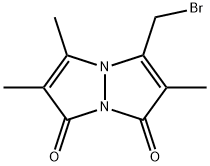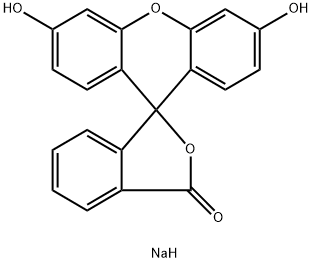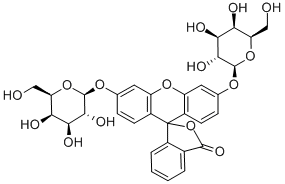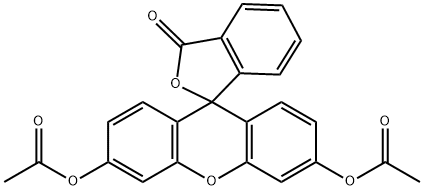MONOBROMOBIMANE
Synonym(s):THIOLYTE MB Reagent, MBB
- CAS NO.:71418-44-5
- Empirical Formula: C10H11BrN2O2
- Molecular Weight: 271.11
- MDL number: MFCD00036951
- SAFETY DATA SHEET (SDS)
- Update Date: 2025-12-17 11:34:44

What is MONOBROMOBIMANE?
Description
Monobromobimane is a thiol-reactive fluorogenic probe. It is cell-permeable, reacts rapidly at physiological pH with available thiol groups, and generates a stable fluorescent signal. Monobromobimane can be used to evaluate or quantify a variety of compounds containing reactive sulfur or thiol groups, including H2S, glutathione, proteins, and nucleotides. The absorption and emission maxima for monobromobimane are 398 and 490 nm, respectively.
Chemical properties
Yellow Powder
The Uses of MONOBROMOBIMANE
Monobromobimane is a thiol-reactive fluorogenic probe. It is cell-permeable, reacts rapidly at physiological pH with available thiol groups, and generates a stable fluorescent signal. Monobromobimane can be used to evaluate or quantify a variety of compounds containing reactive sulfur or thiol groups, including H2S, glutathione, proteins, and nucleotides. The absorption and emission maxima for monobromobimane are 398 and 490 nm, respectively.
The Uses of MONOBROMOBIMANE
Monobromobimane readily reacts with low molecular weight thiols. Bimanes are useful for detecting the distribution of protein thiols in cells before and after chemical reduction of disulfides. Fluorescence: max. Abs. 398nm; e x 10-3: 5.0
The Uses of MONOBROMOBIMANE
Monobromobimane is essentially nonfluorescent until conjugated to target molecule. It readily reacts with several low molecular weight thiols, including glutathione, mercaptopurine, peptides and plasma thiols, as well as with carboxylic acids.
The Uses of MONOBROMOBIMANE
double labeled product that can be fixed with aldehydes for cell-lineage tracing1, neuronal tracing2 and transplantation3.
What are the applications of Application
Bromobimane is a fluorescent thiol probe
Definition
ChEBI: A pyrazolopyrazole that consists of 1H,7H-pyrazolo[1,2-a]pyrazole-1,7-dione bearing three methyl substituents at positions 2, 5 and 6 as well as a bromomethyl substituent at the 3-position.
Properties of MONOBROMOBIMANE
| Melting point: | 152-154 °C(lit.) |
| Boiling point: | 327.8±44.0 °C(Predicted) |
| Density | 1.66±0.1 g/cm3(Predicted) |
| storage temp. | 2-8°C |
| solubility | DMF: soluble |
| form | powder |
| pka | -3.36±0.70(Predicted) |
| color | Yellow |
| λmax | 398 nm |
| BRN | 4430959 |
| Stability: | Light Sensitive |
| Biological Applications | Glutathione S-transferase substrates; detecting glutathione S-transferase,thiols,sulfite,homocysteine,mycothiol,sulfur compounds; thiol-reactive probes |
| CAS DataBase Reference | 71418-44-5 |
Safety information for MONOBROMOBIMANE
Computed Descriptors for MONOBROMOBIMANE
New Products
Indole Methyl Resin tert-butyl 9-methoxy-3-azaspiro[5.5]undecane-3-carboxylate Boc-His(Boc)-OH 2-CTC Resin 4-Chloro-7-tosy1-7Hpyrrolo[2,3-d]pyrimidine 5,7-Dibromo-1H-indole 2,5-dichloro-N-hydroxy-4,6-dimethylpyridine-3-carboximidamide 2,2-Dimethoxy-7-azaspiro[3.5]nonane hydrochloride 4-chloromethyl-5-methyl-1,3-dioxol-2-one (DMDO-Cl) R-2-BENZYLOXY PROPIONIC ACID 1,1’-CARBONYLDIIMIDAZOLE 1,1’-CARBONYLDI (1,2-4 TRIAZOLE) N-METHYL INDAZOLE-3-CARBOXYLIC ACID 4-((2-hydroxyethyl)thio)benzoic acid 1-(TERT-BUTOXYCARBONYL)-2-PYRROLIDINONE Methyl 6-methylnicotinate 3-Pyridineacrylic acid tert-Butyl carbazate TETRAHYDRO-2H-PYRAN-3-OL 2-((4-morpholinophenylamino) (methylthio) methylene) malononitrile 3-(4-morpholinophenylamino)-5-amino-1H-pyrazole-4-carbonitrile 2,4-dihydroxybenzaldehyde 1,3-Diethyl-1,3-Diphenylurea Methyl 2-methylquinoline-6-carboxylateRelated products of tetrahydrofuran



![Fluorescein dicaprylate [Fluorescein dioctanoate]](https://img.chemicalbook.in/)




You may like
-
 Bromobimane CAS 71418-44-5View Details
Bromobimane CAS 71418-44-5View Details
71418-44-5 -
 Monobromobimane 95% CAS 71418-44-5View Details
Monobromobimane 95% CAS 71418-44-5View Details
71418-44-5 -
 Bromobimane CAS 71418-44-5View Details
Bromobimane CAS 71418-44-5View Details
71418-44-5 -
 THIOLYTE® Monobromobimane Reagent, Fluorescent Labeling Compound CAS 71418-44-5View Details
THIOLYTE® Monobromobimane Reagent, Fluorescent Labeling Compound CAS 71418-44-5View Details
71418-44-5 -
 Bromobimane CAS 71418-44-5View Details
Bromobimane CAS 71418-44-5View Details
71418-44-5 -
 Pyridine 99.5% HPLC /UV SpectroscopyView Details
Pyridine 99.5% HPLC /UV SpectroscopyView Details
110-86-1 -
 Dibutyl PhthalateView Details
Dibutyl PhthalateView Details
84-74-2 -
 Thiourea 99% ARView Details
Thiourea 99% ARView Details
62-56-6
